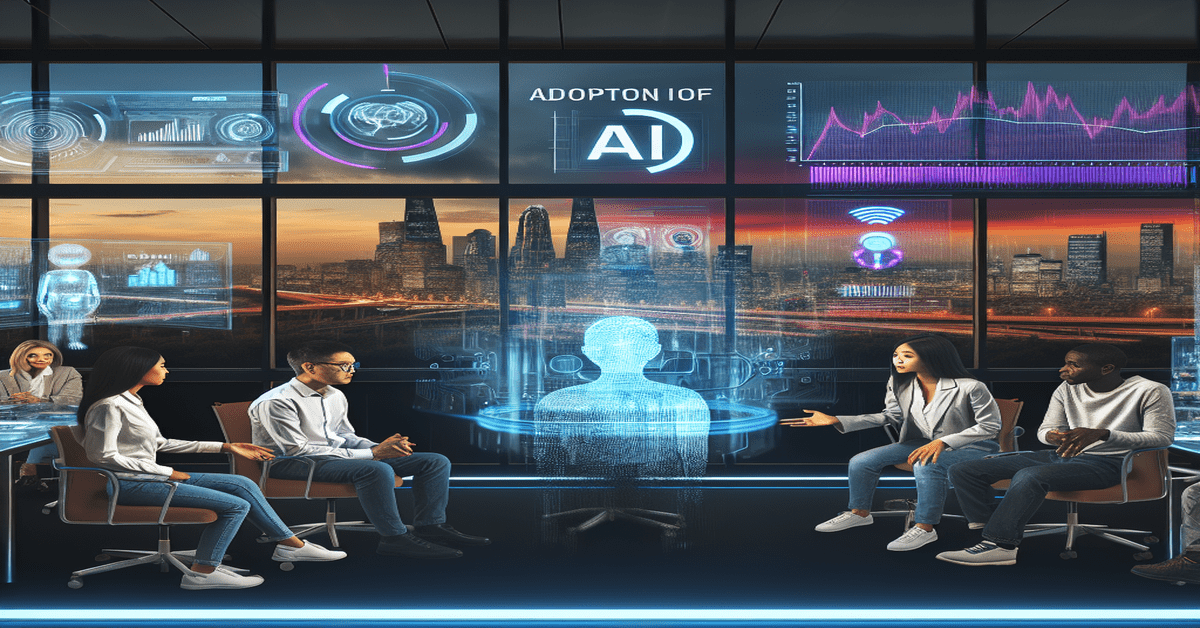The AI Adoption Paradox: Navigating the Gap Between Hype and Reality
In the rapidly evolving world of technology, artificial intelligence (AI) has emerged as a transformative force, capturing the attention of businesses, investors, and media alike. However, despite the **unprecedented levels of investment** and the pervasive buzz surrounding AI, the actual AI Hype vs. Reality rates among businesses tell a different story. In her Forbes article, “4 Reasons Why AI Hype Outpaces Investments And Adoption,” Sol Rashidi delves into the reasons behind this apparent paradox.
The Investment-Adoption Disparity
American companies have poured a staggering $290 billion into AI, showcasing their belief in its potential to revolutionize industries. However, the reality is that only a mere 0.4% of U.S. companies have successfully implemented AI as of 2022. While the adoption rate has seen a modest increase from 3.7% in 2023 to 5.4% currently, projections indicate that it will reach only 6.6% by the end of 2024. This stark contrast between **substantial investments** and low adoption rates raises important questions about the challenges businesses face in harnessing the power of AI.
China’s AI Hype vs. Reality Success
Interestingly, China presents a different picture when it comes to AI adoption. Despite investing less than the U.S., approximately 97% of Chinese companies are actively utilizing AI in their operations. This remarkable statistic highlights the **effectiveness of China’s AI investments** and serves as a testament to their ability to bridge the gap between hype and implementation. Understanding the factors that contribute to China’s success in AI adoption could provide valuable insights for businesses worldwide.
The Disconnect Between Enthusiasm and Integration
The media and industry reports have been instrumental in fueling the AI hype, painting a picture of a future where AI will transform every aspect of our lives. However, the reality on the ground tells a different story. The **pace of AI integration** in businesses lags behind the enthusiasm and expectations set by these narratives. This disconnect between the perceived potential and the actual implementation of AI suggests that businesses are grappling with complex challenges that hinder their ability to fully embrace this technology.
Barriers to AI Adoption
Sol Rashidi’s article sheds light on several factors that contribute to the slow pace of AI adoption among businesses. Implementing AI is not a straightforward process; it requires **specialized skills**, significant financial investments, and a clear understanding of how to integrate AI into existing business processes. The complexity of AI systems, coupled with the need for **data infrastructure** and talent, poses significant barriers for many companies. Additionally, the high costs associated with AI adoption can be a deterrent, especially for smaller businesses with limited resources.
Bridging the Gap: The Way Forward
As businesses navigate the AI adoption paradox, it is crucial to address the challenges head-on. Investing in **talent development** and fostering a culture of continuous learning can help bridge the skills gap and equip employees with the necessary expertise to implement AI effectively. Collaboration between businesses, academic institutions, and governments can facilitate knowledge sharing and provide access to resources and best practices.
Moreover, businesses must approach AI adoption strategically, focusing on **specific use cases** that align with their goals and have the potential to deliver tangible benefits. By starting small and gradually scaling up, companies can mitigate risks and learn valuable lessons along the way. It is also essential to have realistic expectations and understand that AI adoption is a journey, not a destination.
Conclusion
The disparity between AI investments and adoption rates highlights the complex challenges businesses face in harnessing the potential of this transformative technology. While the hype surrounding AI is undeniable, the reality of its implementation requires a measured and strategic approach. By addressing the barriers to adoption, fostering collaboration, and adopting a pragmatic mindset, businesses can gradually bridge the gap between hype and reality, unlocking the true value of AI in the process.
As we move forward, it is crucial for businesses to stay informed about the latest developments in AI and learn from the successes and challenges of early adopters. By engaging in meaningful discussions, sharing insights, and collaborating with industry peers, we can collectively navigate the AI adoption paradox and shape a future where the potential of this technology is fully realized.
#AIAdoption #InnovationChallenges #FutureOfBusiness #AI Hype vs. Reality
- Original article and inspiration provided by Sol Rashidi
- Connect with one of our AI Strategists today at Opahl Technologies


